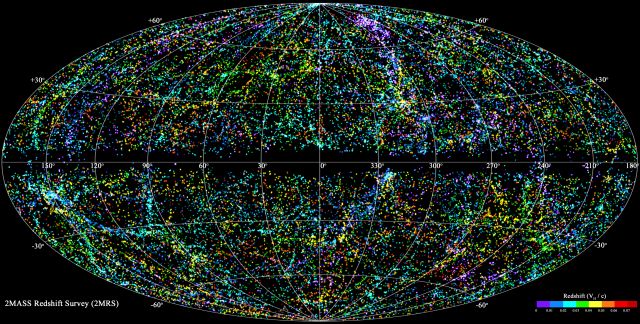Feeling bored at home? Why not download the universe and start exploring right from your bedroom?
It feels like we’re getting closer and closer to the Matrix in real life (or if the real-life is getting closer to the Matrix?) but researchers have just created the largest computer simulation of the universe and the data is available online for anyone to download (that includes you too, extra-terrestrial beings)

An international team associated with Center for Computational Astrophysics has created the virtual universe using ATERUI II which is the world’s most powerful astronomical supercomputer. The simulation, dubbed Uchuu (Japanese word for ‘outer space’) contains about 2.1 trillion particles with 9.6 billion virtual light years. You’ll probably need dozens of computers to download all that data, though.
According to scientists, Uchuu is the closest thing that humans have created to the real universe, with modeling the evolution of more than 13 billion years. With this simulation, researchers can study how dark matter behaves as the universe expands. According to Julia F. Ereza, a PhD student at Instituto de Astrofisicia de Andalucia in Spain, “Uchuu is like a time machine: we can go forward, backward and stop in time, we can ‘zoom in’ on a single galaxy or ‘zoom out’ to visualize a whole cluster, we can see what is really happening at every instant and in every place of the universe from its earliest days to the present, being an essential tool to study the cosmos.”

The team had to use more than 40,000 computer cores and about 20 million hours in computer life to create Uchuu. And of course, that led to a huge pile of data, around 3,000 terabytes to be exact. But thankfully it’s all been compressed to 100 TB so you just need about 100 laptops of 1TB storage to view the universe at home. If that’s a bit too much for you, you can also read the paper published by the team in the Monthly Notices of the Royal Astronomical Society journal.


